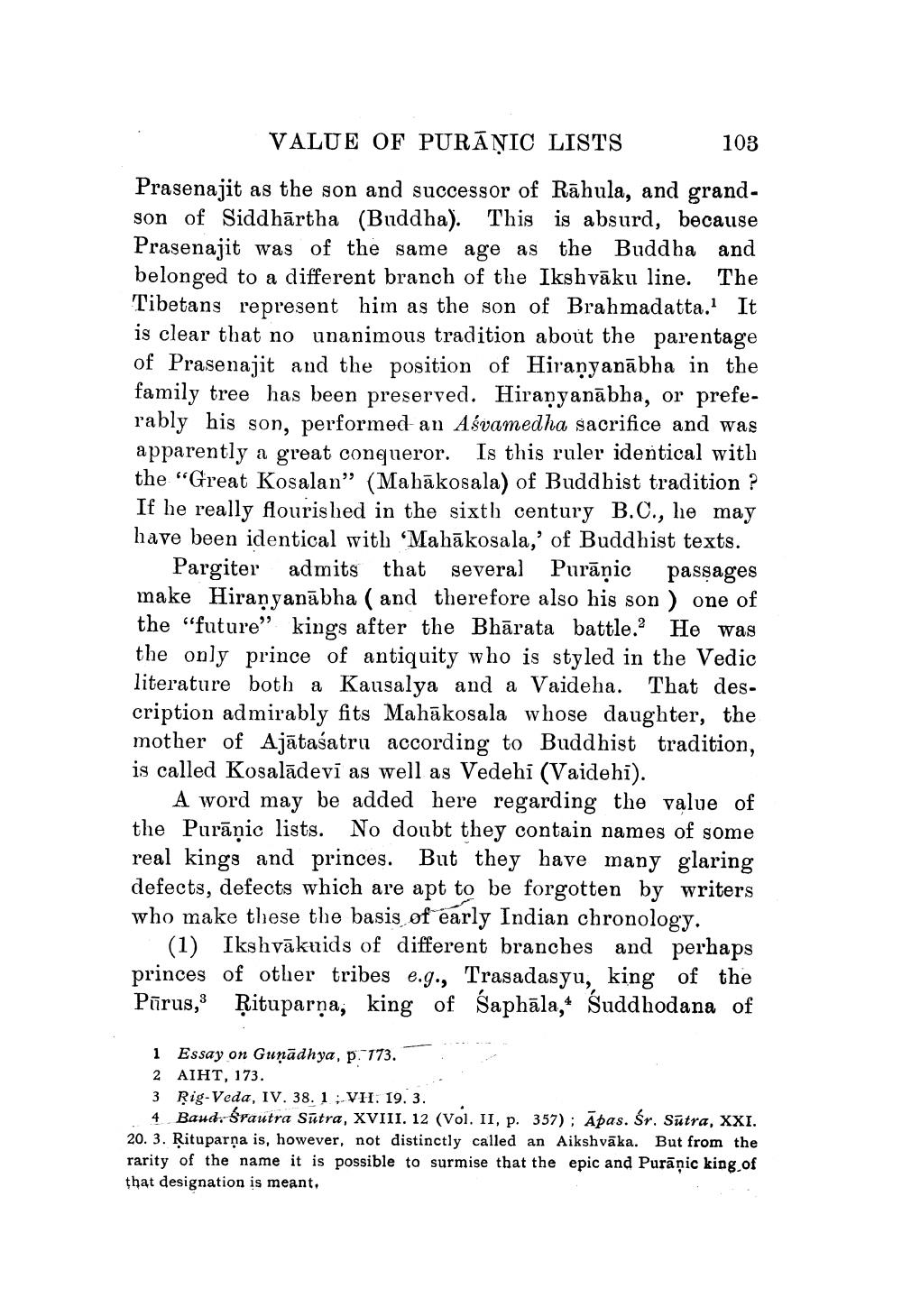________________
VALUE OF PURĀNIC LISTS
103
Prasenajit as the son and successor of Rāhula, and grandson of Siddhartha (Buddha). This is absurd, because Prasenajit was of the same age as the Buddha and belonged to a different branch of the Ikshvāku line. The Tibetans represent him as the son of Brahmadatta. It is clear that no unanimous tradition about the parentage of Prasenajit and the position of Hiranyanābha in the family tree has been preserved. Hiranyanābha, or preferably his son, performed an Aśvamedha sacrifice and was apparently a great conqueror. Is this ruler identical with the "Great Kosalan” (Mahākosala) of Buddhist tradition ? If he really flourished in the sixth century B.C., he may have been identical with ‘Mahākosala,' of Buddhist texts.
Pargiter admits that several Purāņic passages make Hiranyanābha ( and therefore also his son ) one of the “future" kings after the Bhārata battle. He was the only prince of antiquity who is styled in the Vedic literature both a Kausalya and a Vaideha. That description admirably fits Mahākosala whose daughter, the mother of Ajātaśatru according to Buddhist tradition, is called Kosalādevi as well as Vedehi (Vaidehi).
A word may be added here regarding the value of the Purāṇic lists. No doubt they contain names of some real kings and princes. But they have many glaring defects, defects which are apt to be forgotten by writers who make these the basis of early Indian chronology.
(1) Ikshvākuids of different branches and perhaps princes of other tribes e.g., Trasadasyu, king of the Pīrus, Rituparņa; king of Saphāla,* Śuddhodana of
1 Essay on Guņādhya, p. 173. 2 AIHT, 173. 3 Rig Veda, IV. 38.1 ; VH. 19. 3.
4. Baud. srautra Sūtra, XVIII. 12 (Vol. II, p. 357); Āpas. Śr. Sūtra, XXI. 20. 3. Rituparna is, however, not distinctly called an Aikshvāka. But from the rarity of the name it is possible to surmise that the epic and Purāņic king of that designation is meant.




